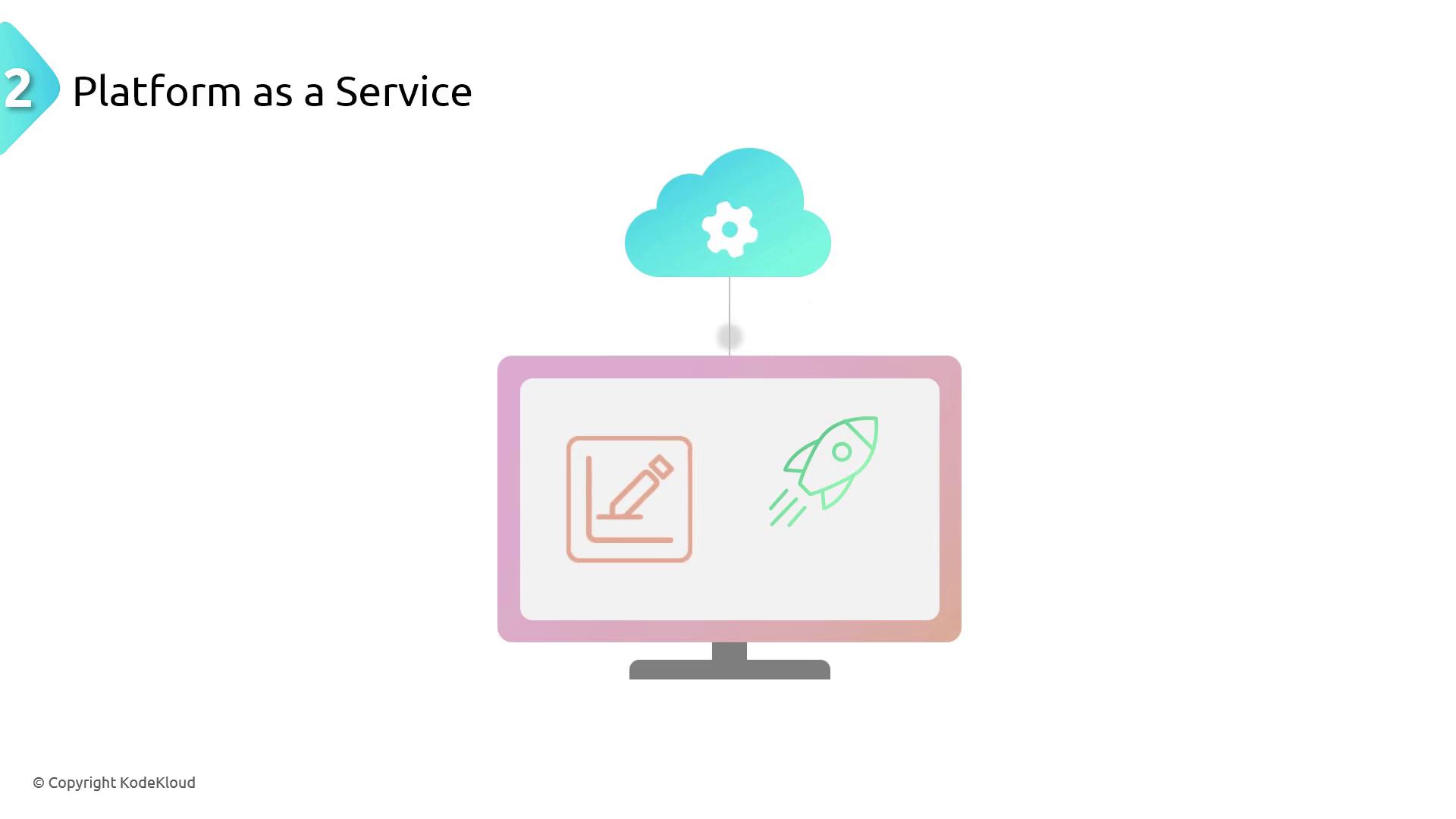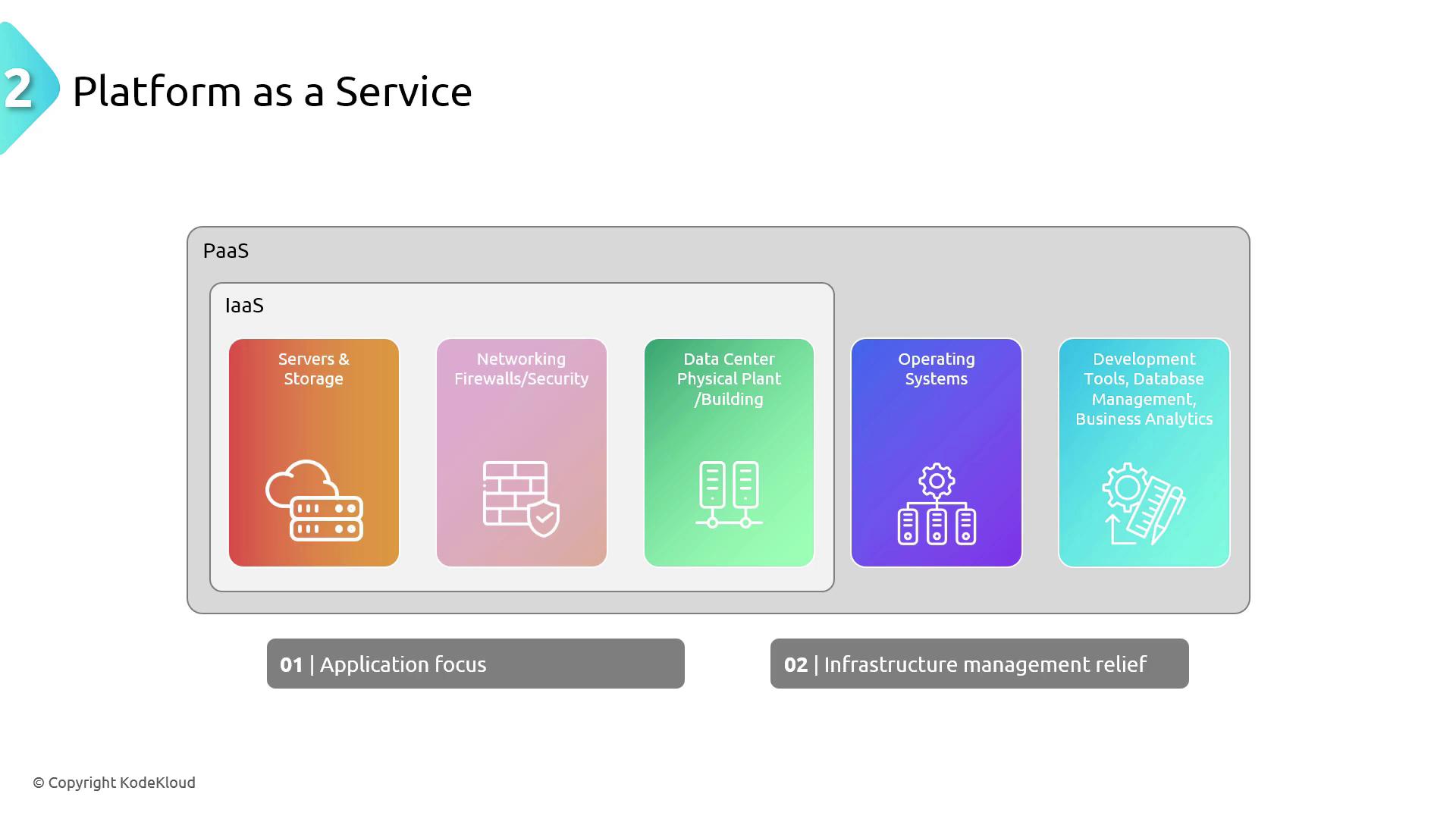AZ900: Microsoft Azure Fundamentals
Cloud Service Types
Platform as a Service
Platform as a Service (PaaS) is like leasing a pre-furnished apartment where essential infrastructure—such as plumbing, electricity, and basic furniture—is already provided. Unlike Infrastructure as a Service (IaaS), which offers you a bare piece of land to build your environment from scratch, PaaS delivers a ready-to-use platform. With IaaS, you must install and manage the operating system, software like Python, and various configurations. PaaS, on the other hand, pre-configures and manages these layers for you, allowing you to deploy your application without worrying about the foundational setup.
Quick Fact
For developers, PaaS offers a comprehensive environment with pre-installed development tools and components, enabling a streamlined development and deployment process.

Consider the case of Bella Innovations' invoicing application. Previously, setting up an operating system, installing Python, and migrating code to the cloud required significant manual effort. With PaaS, developers can simply deploy their Python application directly onto the cloud platform, which already includes the necessary Python runtime and dependencies. This approach eliminates manual installations and configurations, simplifying the entire deployment process.
PaaS builds on the foundational IaaS layer by adding more components—such as operating systems and development tools. While IaaS provides the basic building blocks like servers, storage, and network connectivity, PaaS goes further by managing operating system updates, security patches, scalability, and more. This layer of abstraction relieves developers from handling underlying infrastructure, allowing them to focus on crafting and enhancing their applications.

Developer Advantage
PaaS is tailored for application developers by removing infrastructure management tasks such as runtime updates, OS patches, and security maintenance. This allows developers to concentrate on writing high-quality code and accelerating the deployment cycle.
In summary, PaaS is a robust cloud service model that streamlines application development by managing the complex infrastructure layers. This enables businesses and developers to focus on their core competencies and innovate faster. Now that you have a clear understanding of PaaS, the next section will introduce Software as a Service (SaaS) and its unique benefits.
For further reading, check out these resources:
Watch Video
Watch video content